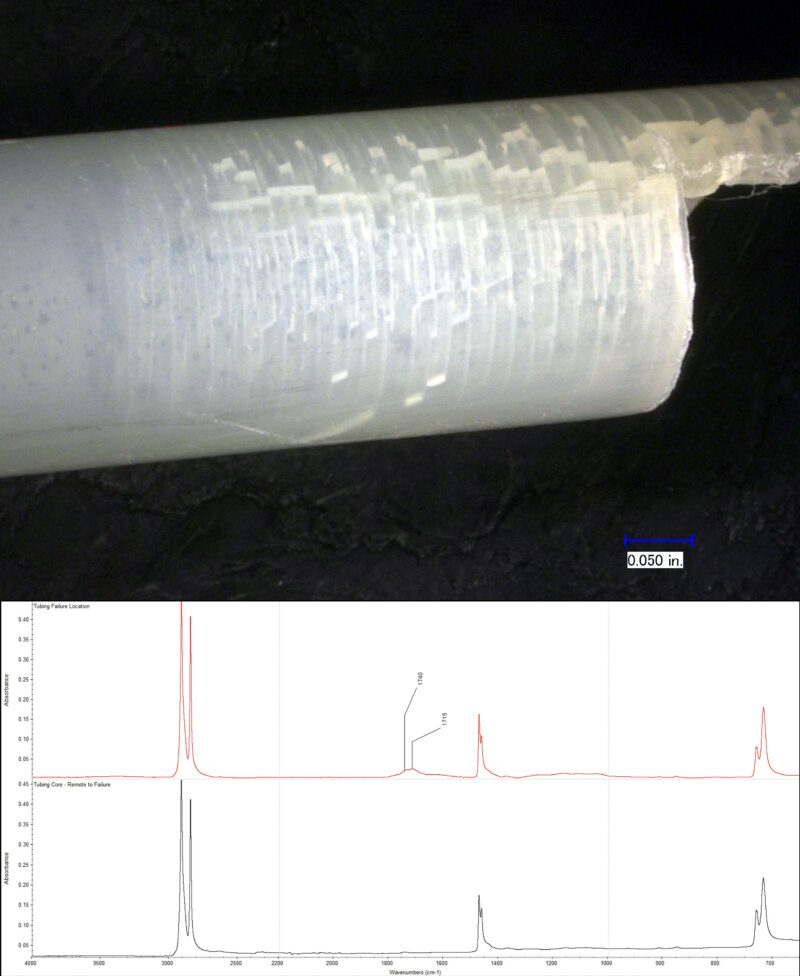This article originally appeared in Appliance Design Magazine – April 2014
Making high quality products with polymeric materials requires careful consideration of the functionality and environmental conditions. Owing to its ability to characterize the molecular makeup of polymers, infrared spectroscopy (FTIR) is an extremely useful analytical tool for scientists and engineers. It can be applied across all phases of the product lifecycle, including design, manufacture and failure analysis during a product’s use. This article demonstrates the usefulness of infrared spectroscopy, by itself and in combination with other techniques, to assist scientists and engineers in the design, manufacture, and support of products using plastic components. Particular focus will be applied to its use in the analysis of failed parts.
Those familiar with polymer chemistry undoubtedly understand the value infrared spectroscopy (FTIR) offers in the characterization of plastic materials. Its value comes from the technique’s ability to assess the largely organic make-up of polymer molecules. This makes it an important tool for product development, quality control, and problem-solving. Key areas where infrared analysis adds value include:
- Material identification and verification
- Copolymer and blend assessment
- Additive identification and quantification
- Contaminant identification – bulk & surface
- Molecular degradation assessment
For unknown material identification, such as in failure analysis, the most common approach is to perform a quick infrared analysis followed by a simple search comparing the sample spectrum to a spectral database of polymers, plasticizers or other compounds. When using the technique for quality control of incoming material, comparisons are made against spectra of known good materials to verify they are the same. This article presents a series of case studies for failure analysis of plastics materials used in appliances where infrared analysis played a key part in the root cause analysis. Other analytical techniques which may have been used to help pinpoint the failure mode are also described.
The case studies presented include:
- Incorrect Material Related to Plastic Fastener Cracking
- Inclusions Within a Valve Failure
- Environmental Stress Cracking of Brackets
- Degradation of Water Tubing Leakage

The tubing showed a series of parallel transverse cracks with brittle fracture
features. The FTIR spectrum representing the failure location exhibited carbonyl bands associated with degradation of the polyethylene resin.
